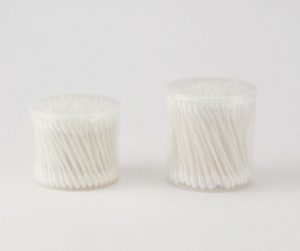I had experienced a warm winter in New Jersey in 2015. It had been a bless to me: not only was there no need to shoveling the backyard, I also spent little money buying new jackets and boots.
My neighbors also guessed that the low snow removal costs must be a delight to city organizers of Boston, which usually spends into a deficit to pay for snow-melting materials and equipment and wages for various personnel. These expenses, in turn, would result in higher taxes and, according to economic theories, compromise market efficiencies.
However, after learning about sustainability and re-examining incidences due to global warming, I felt I was too naïve to cheer the unusual warmth. Although in many places people enjoyed a saving in heating bills and transport companies were happy with low gasoline prices due to the fall in the demand for energy, retailers had suffered tremendous losses.
For example, John Lewis had a 0.6% fall in sales in November, 2015. Many retailers also complained that, even though they discounted heavier than the previous three years to clear stock, the trading was disappointing. It was reported that, the sale of boots of the U.S. were down 3 percent because of the weather.
As a result, marketers now use the weather to predict sales. Companies whose business model are more suitable for this new approach win the game. Zara, one of the winners, has the capability to cope with weird temperature patterns because, as answered by Jesús Echevarría, a high officer at Zara’s parent company, “it starts each season with a very low commitment to any style”. Zara’s production decisions are based on daily feedbacks from its stores worldwide rather than on preset plans. As a result, Zara is more flexible in making changes to its supply than other companies.
Unfortunately, such optimistic attitudes are false. Recently, professionals have grown fearful to the gloomy economic and environmental consequences due to global warming. The Union of Concerned Scientists summarized four categories of systematic impacts of global warming. The most direct affect was on the infrastructure that constitute private properties and public transportations and facilities. It is followed by the loss of social productivity, after the pace of daily business as well as education slows down. Eventually, people become “climate refugees”, engaging in migrations that lead to civil unrest and requires high coping costs.

Ikea is taking the lead by acting environmentally considerate
My research reveals how sustainability goal should be the core of every business because consequences stated above twist the entire business landscape and push every industry to their doom. Firms are fundamentally a conglomeration of decisions, which generates externalities. In order to avoid stepping into destructions, every single firm must start focusing on creating shared values for the society as a whole.
[word count: 445]
Work Cited "Boston to Set Record for Most Dollars Spent on Snow Removal." Boston.com. The New York Times, n.d. Web.27 Oct. 2016. Butler, Sarah. "Warmer Autumn Weather Triggers Coat and Knitwear Discounts." The Guardian. GuardianNews and Media, 2015. Web. 27 Oct. 2016. "Retailers Feel the Heat of Lost Winter Clothing Sales ..." N.p., n.d. Web. 27 Oct. 2016. "How Weather Affects Marketing - Home | Under The Influence with Terry O'Reilly | CBC Radio." CBCnews. CBC/Radio Canada, 2015. Web. 27 Oct. 2016. "Global Warming Effects on the Economy." Global Warming Effects on the Economy. N.p., n.d. Web. 27 Oct.2016. Fontinelle, Eric. "7 Ways Climate Change Affects Companies." Investopedia. N.p., 2010. Web. 27 Oct. 2016.

